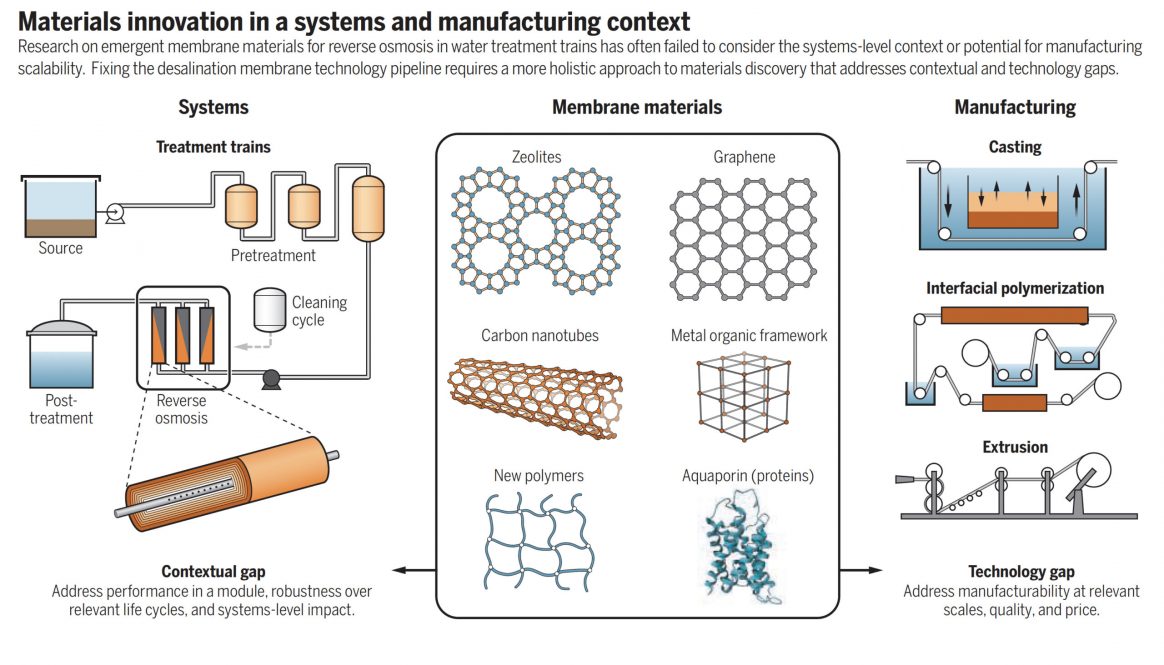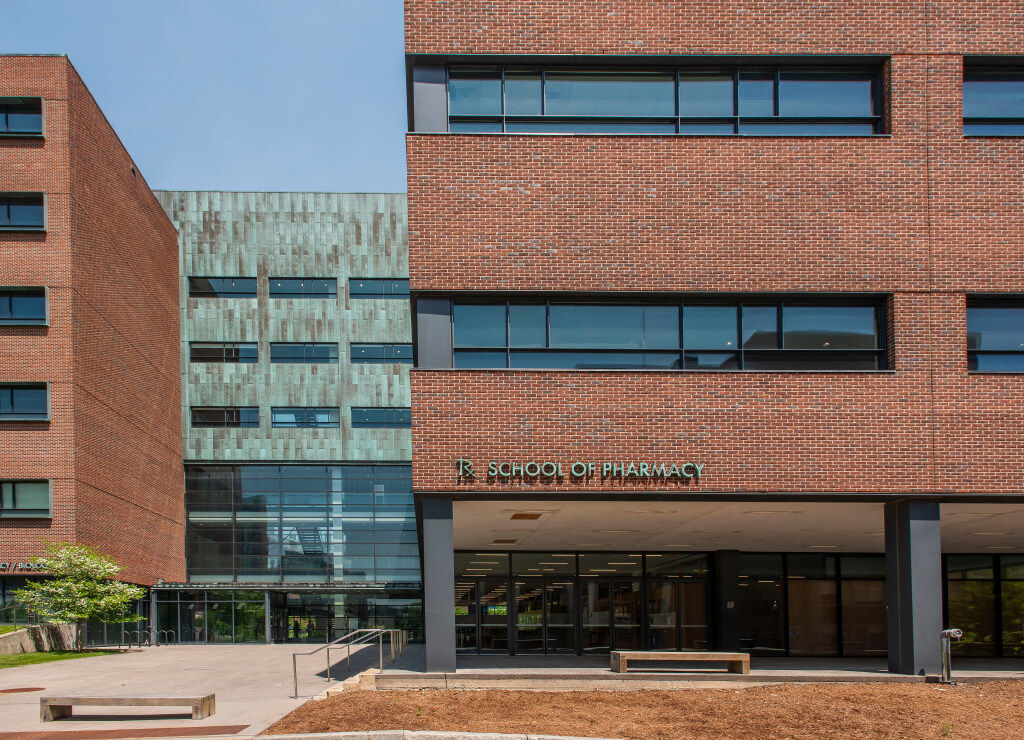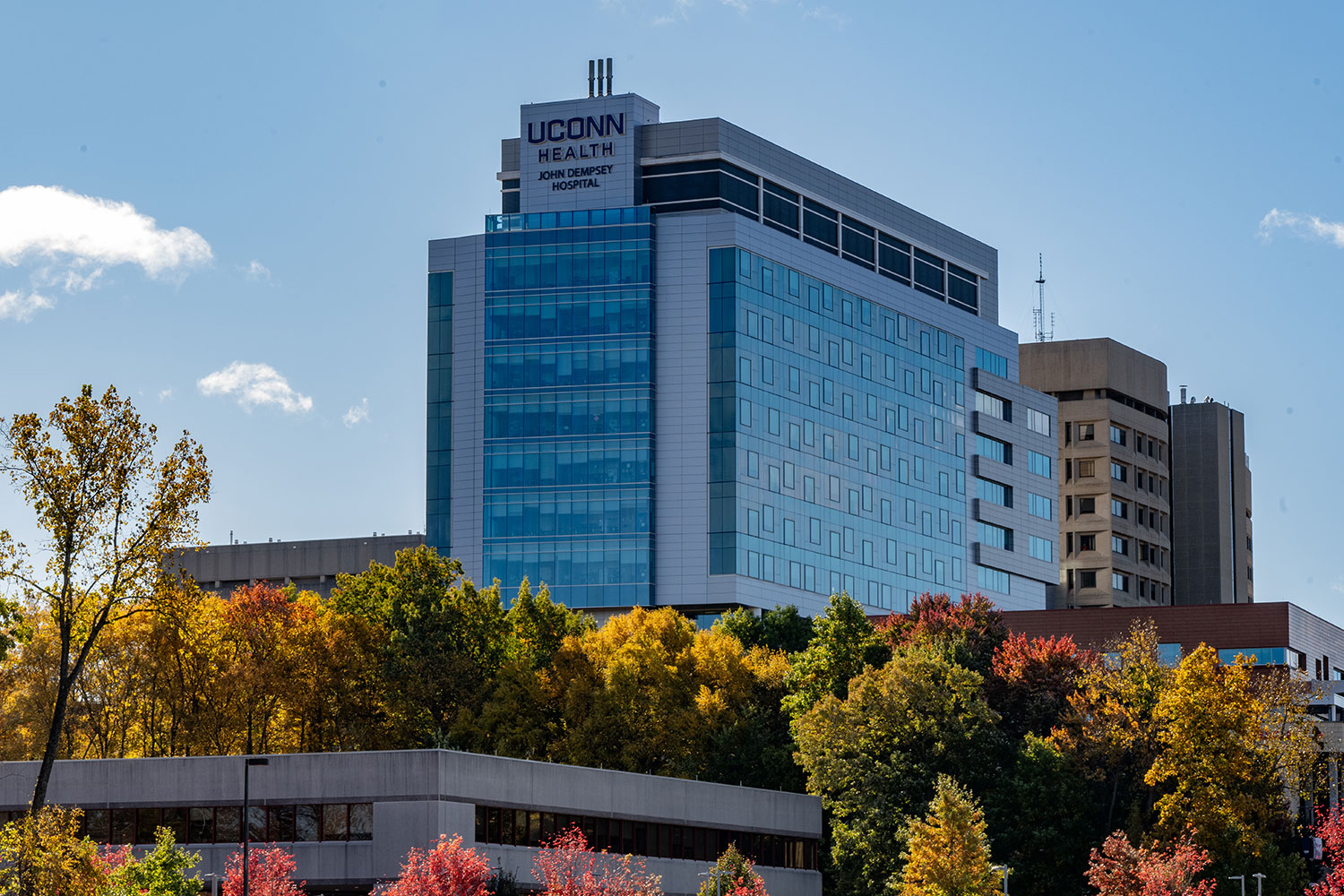By Loretta Waldman
UConn Chemical and Biomedical Engineering Professor Jeffrey McCutcheon is a nationally recognized expert in separation technology. His thought leadership in the field earned him an invitation from the journal Science to share his views on an ongoing challenge associated with one area of this branch of materials science – how to improve the membranes used in the desalination of seawater. The resulting paper – “Fixing the desalination membrane pipeline: Materials discovery alone has not translated into lower cost water treatment” – appears in the “Perspectives” section of the April 21 issue of the journal Science.
McCutcheon, who is Director of the Connecticut Center for Applied Separation Technology (CCAST), delves into the intricacies of membrane technology used in desalination known as reverse osmosis (RO), a process that uses semipermeable membranes and applied pressure to separate solids from the water. Co-authored by Meagan S. Mauter, an Associate Professor at Stanford University and the Research Director of the National Alliance for Water Innovation (NAWI), the article notes that the enduring dominance of traditional RO membrane barriers to separate salts, dissolved organics and pathogens from seawater, brackish water and waste water has exposed a broader need to rethink the innovation pipeline for desalination and water treatment membranes.
“There is no lack of membrane technologies proposed to replace today’s state of the art RO membrane. After decades of research, however, not one of the proposed alternatives has displaced the polyamide RO membrane first introduced 40 years ago,” said McCutcheon, who is also Deputy Topic Area Lead at NAWI, and an Associate Editor of the Journal of Membrane Science Letters. “The promises of new technology have failed to impact commercial desalination. I think that is something we need to understand and address.”

As a first step, researchers, manufacturers, and the companies using the membranes need to come out of their silos and start collaborating, McCutcheon says. Ever since the last major innovation in RO membrane technology that made today’s RO membrane, researchers, manufactures, and end users have retreated to their respective corners. Obstacles to innovation include reluctance on the part of manufacturers to share key pain points of their technologies with outside partners, leaving researchers to make assumptions as to what challenges they should be working on. To compound the problem, researchers are often limited to lab-scale research that cannot make membranes at scale or challenge membrane in real conditions. This problem is largely caused by the lack of research tools that allow for pilot-scale RO manufacturing and testing.
“I think that is why we have seen no adoption of new technology in RO,” he said, “We are making membranes at the millimeter scale, testing them, and then promoting an unrealistic narrative about how this membrane will change the industry. No one really believes that.”
Fixing the innovation pipeline to meet industry needs will require reintegrating membrane materials discovery, design, and synthesis with membrane manufacturing, component design and process systems engineering, McCutcheon says. To explore new membrane materials, an understanding of both conventional and emergent manufacturing techniques for those materials is essential, he says. His paper calls for new scale- up and prototype facilities that would allow researchers to determine manufacturability in the research, development, demonstration, and deployment process. McCutcheon would like to see more support from government and non-government funding organizations and more respect from elite scientific journals which, he says, place less value on manufacturing research. Such efforts would benefit other membrane processes as well. Membrane fields such as gas separations and ion exchange face similar challenges.
McCutcheon’s lab (CCAST) is working to address some of these challenges. Located at UConn’s Innovation Partnership Building, CCAST is developing a new membrane manufacturing technology that enables customization of membrane performance, exquisite control of thickness and surface roughness, and reduces the use of chemicals by 90 percent. McCutcheon’s work is supported by grants from the National Science Foundation and the U.S. Department of Energy’s Industrial Efficiency and Decarbonization Office (IEDO) through NAWI..
Membranes play a key role in a host of industrial processes beyond water treatment, including fuel cells, electrolyzers, petrochemicals, food & beverage, and the bio-tech and pharmaceutical industries. CCAST’s mission is to identify opportunities to implement membrane and other advanced separation technology into various industrial and manufacturing processes in order to lower energy use, reduce carbon footprint, limit waste, and prevent adverse environmental and health impacts. That can only happen if we can facilitate the translation of newly identified membrane materials into manufacturable membrane platforms at scale.
“Membrane materials research in the absence of manufacturing considerations is unlikely to lead to commercially relevant improvements in membrane technology”, says McCutcheon. “I hope that UConn and NAWI can be leading organizations supporting the membrane innovation pipeline and play a critical role in the membrane innovation ecosystem in the United States.”



